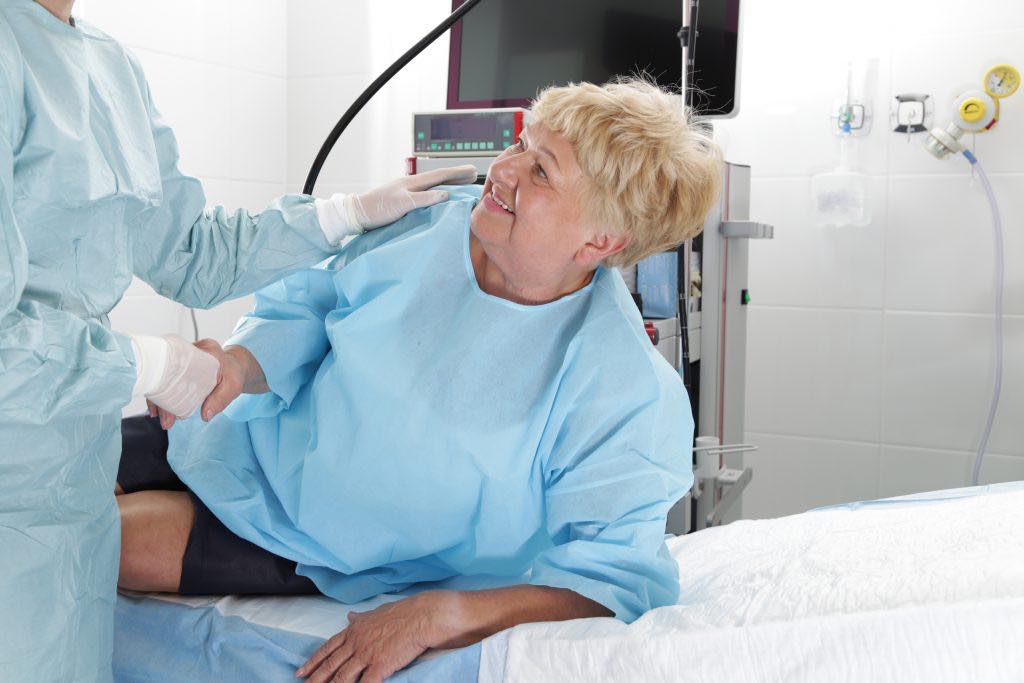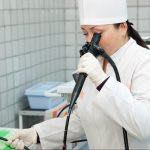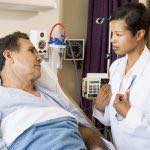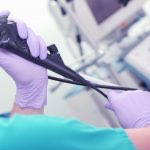Colonoscopy vs. endoscopy—what’s the difference? If you’ve been suffering from gastrointestinal issues, your doctor may have recommended either a colonoscopy or an endoscopy. While both procedures address issues in the same area of the body, they are used to observe and diagnose different medical symptoms. In this post, we’ll explore the differences between the two procedures and their uses.
Colonoscopy vs. endoscopy: what’s the difference?
When referring to an endoscopy, people are most often referring to an upper endoscopy. This is a nonsurgical procedure that a doctor will use to examine the digestive tract. A colonoscopy does fall under the general umbrella of an endoscopy.
The main difference between an upper endoscopy and a colonoscopy is that an upper endoscopy is performed through the mouth, while a colonoscopy is performed through the rectum. Both procedures use an endoscope, a flexible 4-foot tube, about ½ inch in diameter, with a camera on one end to capture images.
Colonoscopy vs. endoscopy: when do you need an endoscopy?
An upper endoscopy procedure is used if your doctor, usually a gastroenterologist, needs to examine the upper area of your gastrointestinal tract: the esophagus, stomach, or duodenum. During a colonoscopy, on the other hand, your doctor will decide if they need to examine your colon through to your cecum, the start of your colon, or the very last portion of your small intestine, the ileum. Your doctor may go as far as the ileum if they are looking for conditions such as Crohn’s disease but in order to screen for colon cancer, they should not need to pass the cecum. Your doctor may recommend an endoscopy if you have any of the following symptoms:
- Stomach pain
- Digestive tract bleeding
- Ongoing constipation or diarrhea
- Gastritis (an irritation of the stomach)
Colonoscopy vs. endoscopy: when do you need a colonoscopy?
Your doctor will order a colonoscopy to check for colorectal cancer, most commonly known as colon cancer. If you are suffering from diarrhea, constipation, relentless gas or cramps, your doctor will want to rule out colon cancer first. These symptoms are present when the cancer is in its later stages. For this reason, it is recommended for people over the age of 50 to get regular colonoscopies every 10 years to check for colon cancer, even if you are not at high risk. You may be considered a high-risk patient if you are: male, African American, have a medical history of colon cancer or inflammatory bowel diseases, overweight, or smoke cigarettes.
There is an increased chance of experiencing perforation after a colonoscopy if you have been diagnosed with diverticulosis when pockets form in the walls of your digestive tract. You must also let your doctor know if you are pregnant, have any lung or heart conditions, or allergies to medication. If you take any blood thinning medication it is essential to inform your doctor as they may need to adjust your dosage before the procedure. If you experience or are concerned about any of the following, your doctor will likely recommend a colonoscopy:
- Colon cancer
- Bloody stool
- Rectal bleeding
- Changes in bowel movements
Colonoscopy vs. endoscopy: how are they performed?
The main difference between an endoscopy and a colonoscopy is where the endoscope enters the body.
In an upper endoscopy procedure, you will first receive sedation, usually through an IV. The endoscope then enters through your mouth and is passed through your throat to view the esophagus, stomach, and the upper part of the small intestine called the duodenum. An upper endoscopy is a non-surgical procedure but also a treatment; at this point, devices can actually be passed through the endoscopy to stymie any bleeding.
Similarly, a colonoscopy will also begin with sedation. Your doctor will instruct you to lie down on your left side. You may be asked to shift your position throughout the process in order to help them navigate the tube through your rectum up to the cecum. Once the endoscope reaches the cecum, your doctor will slowly begin to pull the endoscope out in order to identify any abnormalities with the camera on the end of the endoscope. During this, your doctor will blow air into your colon to help them see more clearly.
You may experience minor cramping throughout the procedure but this is normal. Both a colonoscopy and endoscopy procedure can last anywhere from 30 to 60 minutes. They typically don’t last longer than an hour.
Your gastroenterologist may decide to perform a biopsy in order to further examine any polyps, small growths, or other abnormalities. In this case, a small amount of the area of interest will be removed for analysis. This can increase the cost of your endoscopy or colonoscopy. Be sure to ask how much you can expect to pay if your physician orders a biopsy. Knowing what costs to expect before your medical procedure will be can help you budget for healthcare and save money.
Colonoscopy vs. endoscopy: how should you prepare?
Preparing for an endoscopy procedure is much less intensive than the preparation process for a colonoscopy. Your doctor will require that you fast 6 to 8 hours prior to the procedure, including water. Make sure to let your doctor know about any medications, particularly blood thinners, or other medical conditions.
In comparison, a colonoscopy requires your GI tract to be clean, meaning you’ll need to cleanse for several days prior to the procedure. You will be required to drink a large volume of a cleansing solution or simply a liquid diet with laxatives. You will need your colon to be completely clear so that your doctor can properly examine you. They will give you specific instructions on how to cleanse before a colonoscopy. You will also be required to have a minimum of one enema, though most patients have two. Your doctor will give you clear directions on how to use an enema properly.
Colonoscopy vs. endoscopy: what happens next?
Once you’ve gone through your endoscopy or colonoscopy, you may be wondering: what happens next? To begin with, make sure to attend your appointment with someone to drive you home. Even if you feel alert following your procedure, you will not be allowed to drive yourself. Sedation can alter your judgment, slow down your reaction time, and make you drowsy.
Severe complications are very rare for both procedures. Minor bleeding can be present after, as well as cramping or feelings of gas immediately after a colonoscopy. These will be transient and should not be a cause for concern. You can begin eating normally again right away.
Report to your doctor if you feel that any bleeding is excessive, especially in the case of prolonged rectal bleeding. If you have severe cramps, fever, or chills, again report to your doctor right away. Otherwise, you should feel right up to speed and your normal self within a matter of days.
Need an endoscopy or colonoscopy? If you don’t have health insurance, these medical procedures could cost a lot out-of-pocket, depending on several factors. New Choice Health’s Patient Assist program offers cash pay discounts and special financing options on colonoscopies and endoscopies. Learn more about Patient Assist to see if you qualify.







